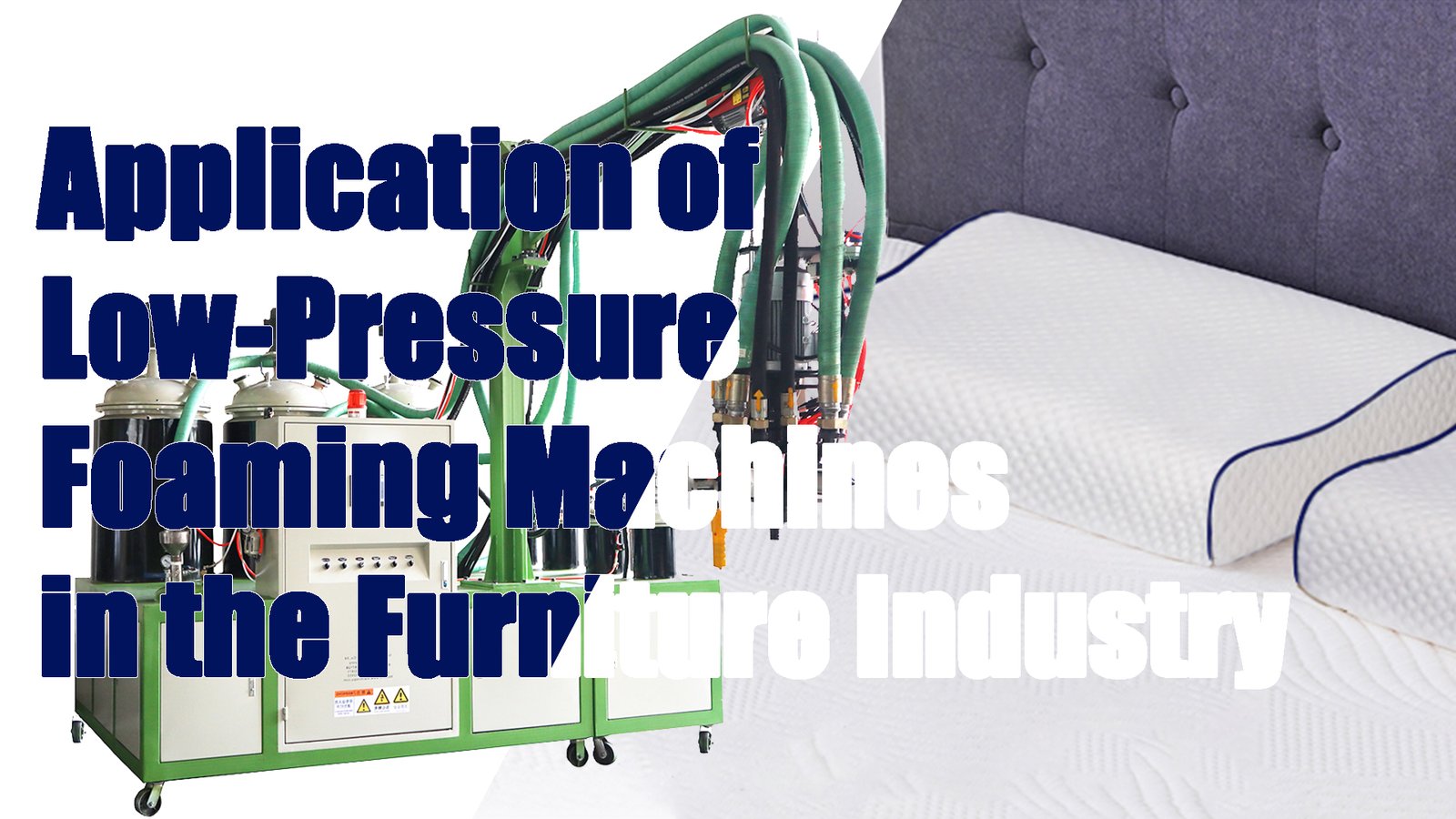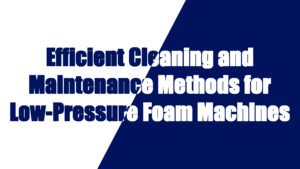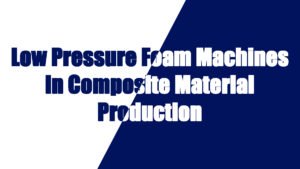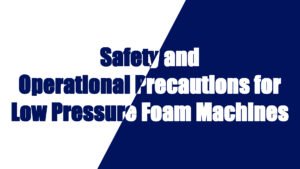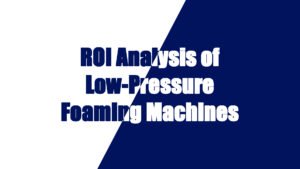Low-pressure foaming machines have increasingly become an essential tool in the furniture industry for enhancing production efficiency, reducing costs, and improving product quality. Their role in the production of soft furnishings such as sofas, mattresses, and cushions is particularly significant. Below, we will explore in detail how low-pressure foaming machines help the furniture industry thrive.
1. Enhancing Production Efficiency
One of the key factors in improving production efficiency in the furniture industry is the high efficiency of low-pressure foaming machines. The production cycles in the furniture sector are often tight, and low-pressure foaming machines, with their simple operation and quick response capabilities, are well-suited to meet these demands.
Rapid Foam Production: Low-pressure foaming machines start up quickly and can complete the entire foaming process in a short period of time. This quick response feature ensures that the production line can meet large-scale demands without prolonged waiting or downtime.
Automation and Precise Control: Modern low-pressure foaming machines are equipped with highly efficient automated control systems that allow for precise control over the proportion and mixing of foam materials. By automating these processes, the machines ensure consistent foam quality and composition, thus reducing the errors associated with manual mixing and minimizing waste.
Minimized Production Interruptions: Low-pressure foaming machines often come with intelligent monitoring systems that track machine performance and production processes in real time. These systems provide immediate feedback on any issues, allowing for quick resolutions and preventing production downtime. This ensures a smoother, more efficient production process.
2. Improving Foam Quality
Foam quality is critical for ensuring comfort and durability in мебель products, especially in soft furnishings like sofas, mattresses, and cushions. Low-pressure foaming machines can generate foam with consistent density and uniformity, ensuring that the end products meet high-quality standards.
Uniform Foam Structure: The design of low-pressure foaming machines ensures a uniform foam structure, especially important in soft furnishings. The foam’s bubble distribution is consistent, which reduces the occurrence of uneven foaming, a problem often associated with high-pressure foaming machines. This uniformity contributes to better comfort and durability.
Precise Density Control: Low-pressure foaming machines offer precise control over foam density, allowing manufacturers to produce foams that meet specific requirements for different furniture items. For instance, sofa cushions may require softer foam, while the backrest or mattress layers need firmer foam. Such flexibility in controlling density ensures the right level of support and comfort for consumers.
Enhanced Durability and Longevity: Foam that is produced with a uniform structure and stable density is less likely to suffer from deformities or sagging over time. This is particularly important for products like mattresses and sofas that undergo prolonged use. The improved foam quality results in higher durability and longer product life.
3. Cost-Effectiveness
The cost-effectiveness of low-pressure foaming machines is another reason why they are widely used in the furniture industry. When compared to high-pressure foaming machines, low-pressure foaming machines are more affordable both in terms of initial investment and operating costs, making them particularly attractive to small and medium-sized businesses.
Lower Initial Investment: The structure of low-pressure foaming machines is simpler, and the required technological expertise is not as advanced as high-pressure systems. This results in lower capital costs for procurement, making them an attractive option for budget-conscious manufacturers, especially small and mid-sized businesses.
Lower Operating Costs and Higher Energy Efficiency: Low-pressure foaming machines consume less energy, reducing the operational costs over time. The lower energy requirements contribute to a decrease in the carbon footprint, aligning with green manufacturing initiatives and helping businesses comply with environmental regulations.
Lower Maintenance Costs: The simpler design of low-pressure foaming machines makes them easier to maintain and repair. The absence of high-pressure pump systems reduces wear and tear on the equipment, extending its lifespan and reducing maintenance costs. Additionally, the lower likelihood of mechanical issues further cuts down on unexpected repair costs.
4. Production Flexibility and Customization
Another significant advantage of low-pressure foaming machines in the furniture industry is their flexibility in production. Whether manufacturing large batches of standard products or small batches of customized items, low-pressure foaming machines offer excellent versatility.
Custom Mattress Production: As consumer demand for personalized comfort increases, custom mattresses have become more popular. Low-pressure foaming machines can adjust the foam density and hardness according to specific customer needs. This allows manufacturers to offer a variety of comfort levels, from soft to firm, and produce mattresses with different foam layers to meet diverse consumer preferences.
Diverse Sofa and Cushion Designs: The diversity in sofa and cushion designs demands foam with varying densities and comfort levels. Low-pressure foaming machines can produce foams of different densities, allowing manufacturers to create multi-density cushions for seating, backrests, and armrests, all with varying levels of comfort and support.
Multi-Density Foaming: Low-pressure foaming machines are capable of producing multi-density foam. For example, in sofa production, different foam densities may be used for different parts of the seating, such as softer foam for seat cushions and firmer foam for the backrest. This flexibility enables the production of more customized and ergonomic furniture items that cater to specific consumer needs.
Low-pressure foaming machines offer significant advantages in the furniture industry, particularly in the production of sofas, mattresses, and cushions. By improving production efficiency, ensuring consistent foam quality, reducing production costs, and providing flexibility in customization, low-pressure foaming machines are helping furniture manufacturers stay competitive in a fast-evolving market. Their high cost-effectiveness and ease of use make them a particularly appealing choice for small to medium-sized furniture companies. As consumer demand continues to diversify, low-pressure foaming machines will play an increasingly crucial role in shaping the future of the furniture industry.


















